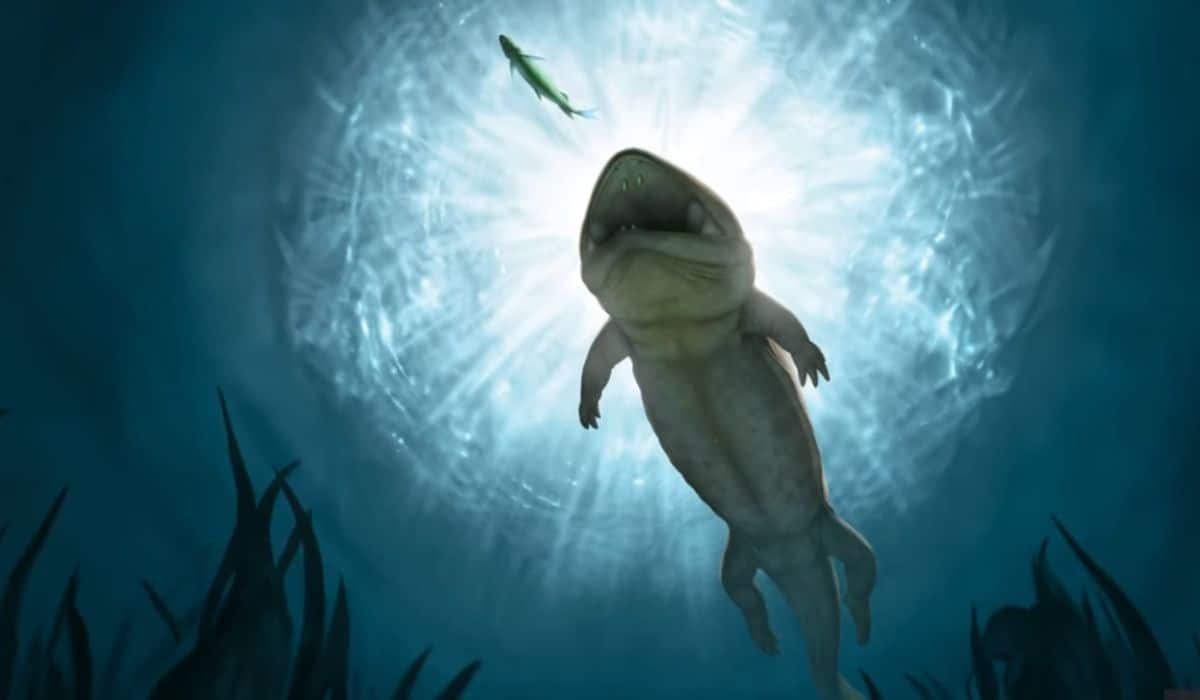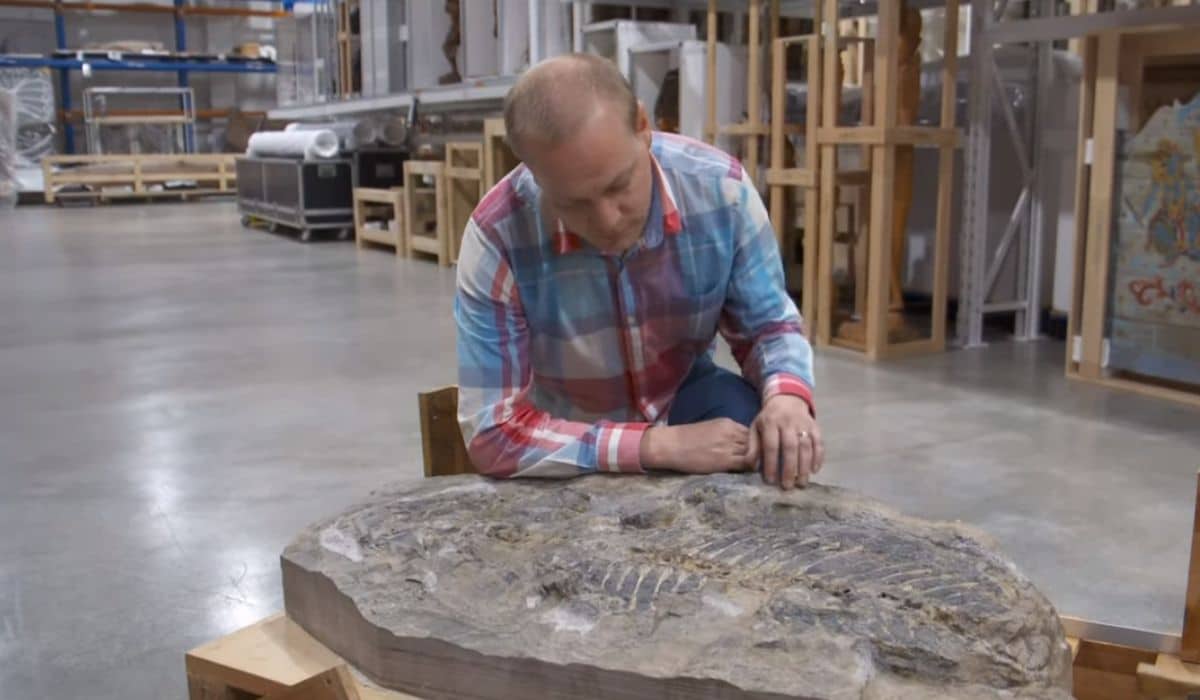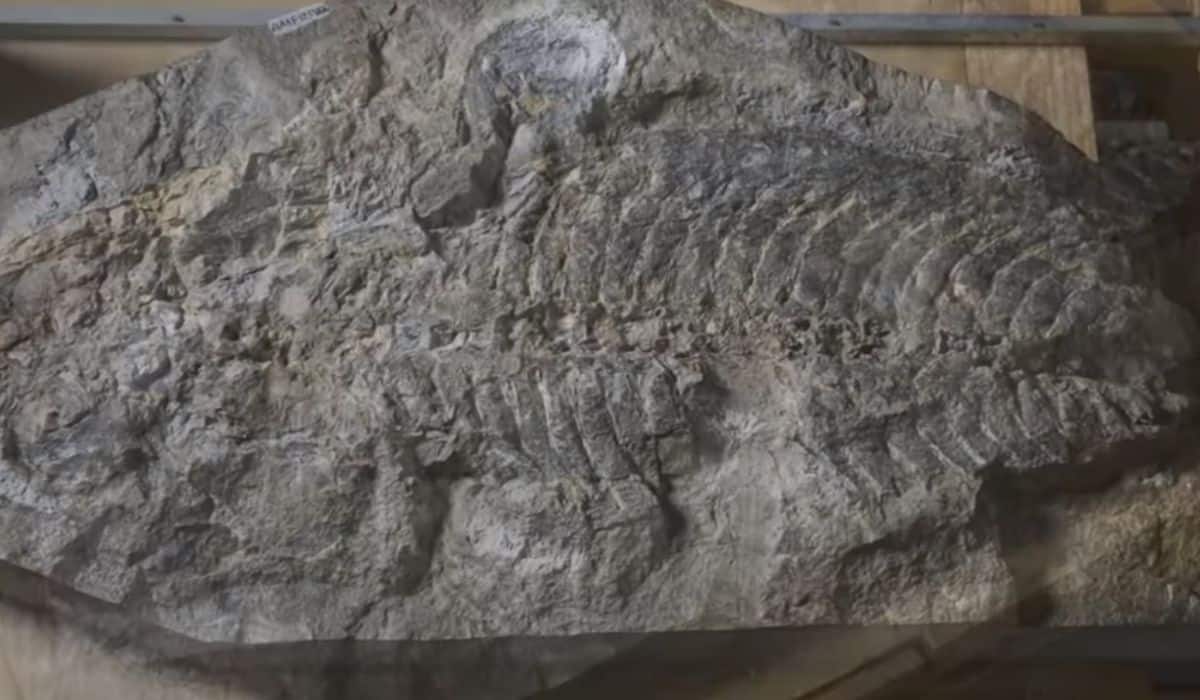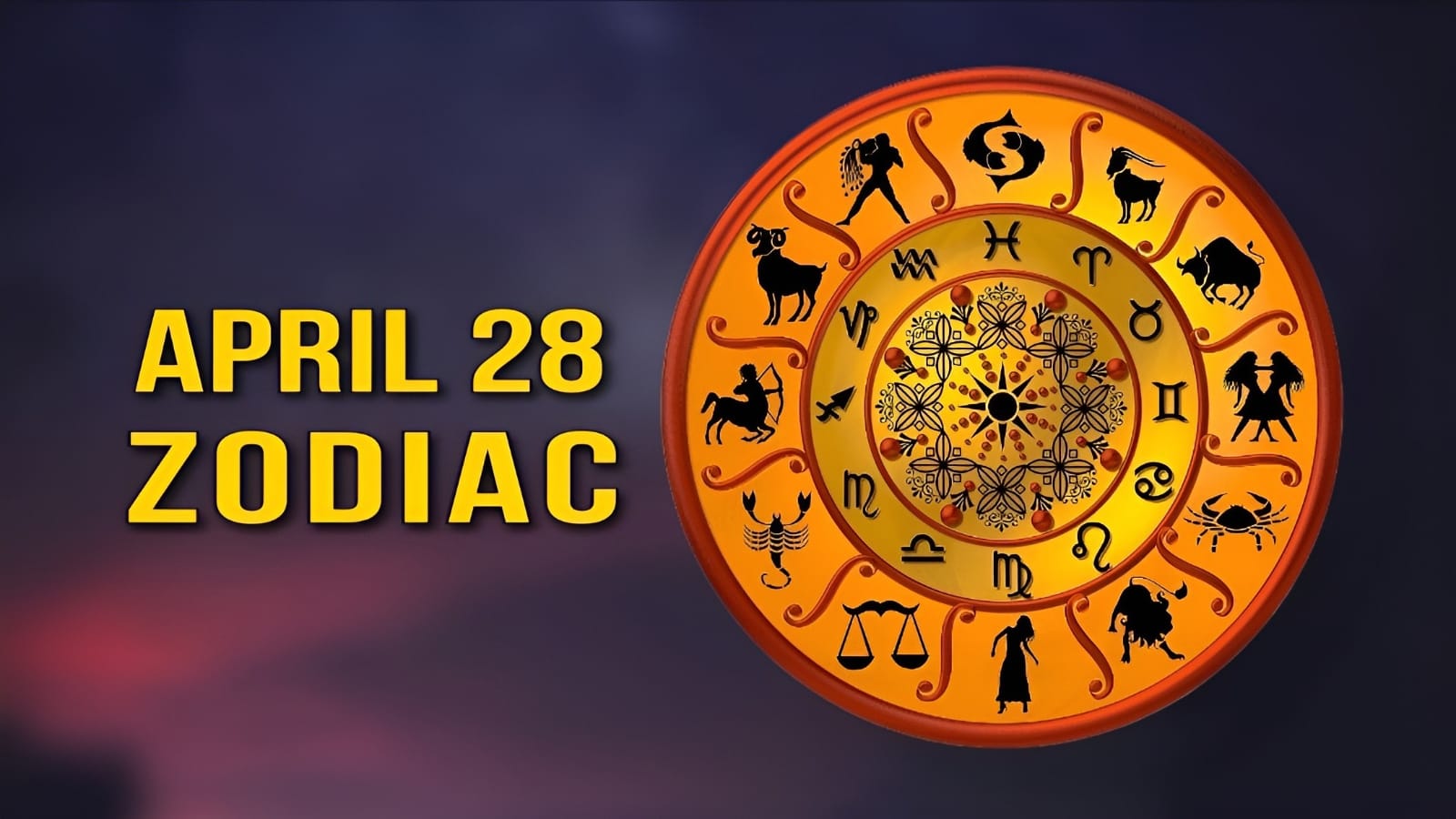In an unexpected twist, a 240-million-year-old amphibian fossil was discovered in the 1990s, not during a dedicated excavation but while building a garden retaining wall.
This incredible find, now formally named Arenaerpeton supinatus, was unearthed by a retired chicken farmer from rocks sourced from a local quarry.
Recognizing its significance, the farmer generously donated the fossil to the Australian Museum in Sydney. Since then, scientists from the University of New South Wales (UNSW Sydney) and the Australian Museum have taken a closer look, unveiling its history and importance.
Arenaerpeton Supinatus Description
Lachlan Hart, a palaeontologist with affiliations at both UNSW Science and the Australian Museum, expressed his excitement over the fossil discovery, named Arenaerpeton supinatus, which translates to ‘supine sand creeper’. What makes this find truly special is that it showcases almost the entire skeleton, along with rare imprints of its skin.
“It’s an outstanding specimen from the temnospondyls group, creatures that roamed the earth before and during the era of dinosaurs,” explained Mr. Hart, who is also pursuing his PhD at UNSW’s School of Biological, Earth and Environmental Sciences. “It’s not every day that we come across such well-preserved fossils, especially with both the head and body intact and traces of soft tissue.”
Habitat and Appearance
Around 240 million years ago during the Triassic period, the waters of what we now call the Sydney Basin were home to the Arenaerpeton. This ancient creature likely preyed on fish such as Cleithrolepis, but not much is known about its other prehistoric neighbors, says Mr. Hart.
At first glance, you might mistake Arenaerpeton for its modern relative, the Chinese Giant Salamander, especially given their similar head shapes. However, a closer look at the fossil suggests significant differences. “Its ribs and preserved soft tissue outline suggest a much bulkier body than today’s salamanders,” notes Mr. Hart. “And its mouth was a bit of a showstopper, complete with fierce teeth and a pair of large tusks.”
Discovery Importance
Mr. Hart is particularly thrilled about the discovery of Arenaerpeton, not just because of its age but also its impressive size. While it stretches a remarkable 1.2 meters from head to tail, many of its contemporaries were quite petite.
“The fascinating thing is that even though Arenaerpeton lived 120 million years before the last of its kind, the temnospondyls, some of them grew to be quite gigantic,” Mr. Hart shares. “Considering their fossil records stretch across two mass extinction events, maybe their increasing size had something to do with their remarkable resilience.”
Dr. Matthew McCurry, who teaches at UNSW’s School of BEES and is also the Curator of Palaeontology at the Australian Museum, couldn’t agree more about the significance of the find. “I’d say it’s one of the most notable discoveries in New South Wales over the last few decades,” he comments, adding that he had the pleasure of co-authoring the study on it. “It’s an iconic piece of our fossil lineage.”
The research has been showcased in the Journal of Vertebrate Paleontology, and if you’re keen to see this ancient amphibian up close, you’ll soon get the chance. The Australian Museum in Sydney will be exhibiting the fossil later this year.







































